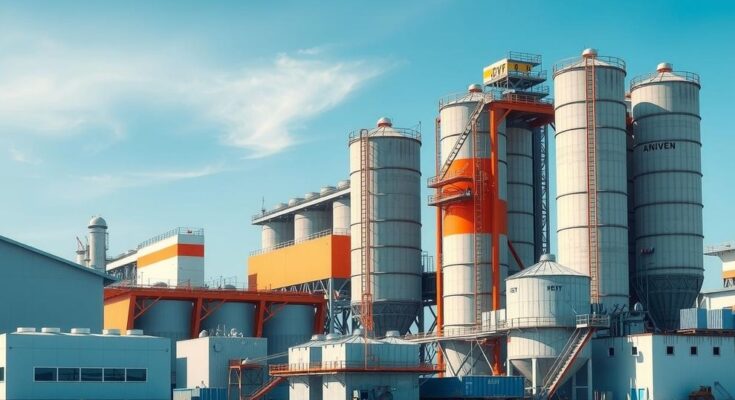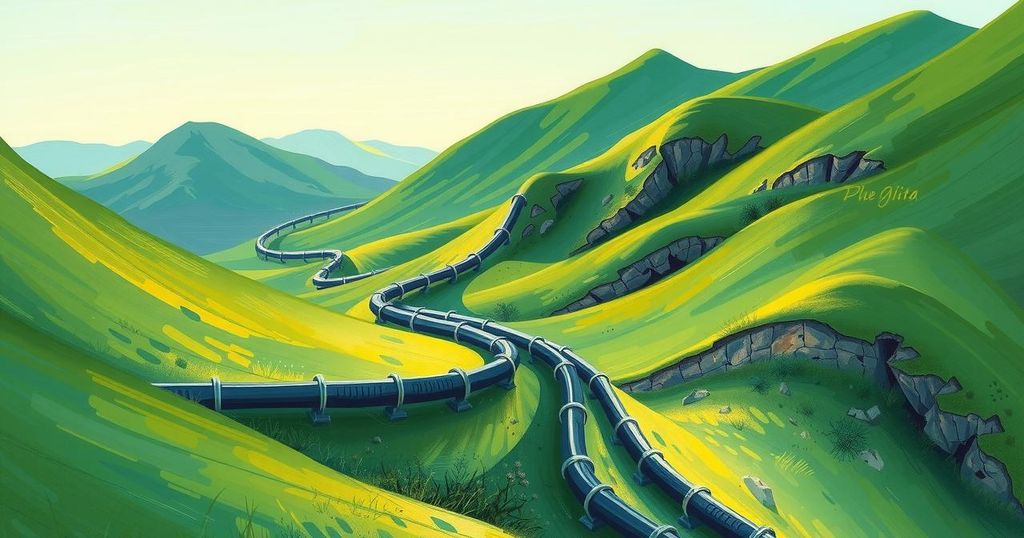Cameroon plans to increase its cement production capacity to 12.7 million tons by 2025 with three new cement plants in Édéa, backed by Chinese investment. These plants will collectively add 4.3 million tons to the current production, fulfilling domestic needs and opening export opportunities. However, high prices persist, attributed to clinker importation costs.
Cameroon is poised to enhance its cement production capabilities significantly through the establishment of three new cement plants located in Édéa, a town within the Sanaga-Maritime department. By the end of 2025, these initiatives are expected to elevate the country’s total cement production capacity to 12.7 million tons, thereby not only satisfying domestic demand but also facilitating entry into international markets.
The Minister of Industry, Mines, and Technological Development, Mr. Fuh Calistus Gentry, recently toured the construction sites of these plants, accompanied by visits to two local quarries. All three plants are being developed by Chinese investors in Édéa, the departmental capital, with a strong emphasis on local employment.
The first facility, Sino Africaine (Sinafcim), currently under construction, is projected to have an annual production capacity of 1 million tons and will create approximately 200 jobs, of which about 90% will be occupied by Cameroonian nationals. Production is anticipated to commence in April 2025.
The second plant, Central Africa Cement (CAC), has already commenced operations, boasting a production capacity of 1.5 million tons per year. Currently, it employs 100 individuals, with plans to expand its workforce to 200.
The third plant, Yousheng Cement, situated along the banks of the Dibamba River near Douala, is still under development and is designed to produce 1.8 million tons annually.
Upon the completion of all three facilities, Cameroon’s overall cement production will increase by 4.3 million tons, fulfilling the national demand of 8 million tons while positioning the country as a potential exporter of cement.
This expansion marks a significant transformation in Cameroon’s cement industry. With the new plants, the total number of cement production units will rise to nine, a monumental change following the end of the cement monopoly held by Cimencam, a subsidiary of Lafarge Holcim Maroc Afrique, which dominated the market for 48 years with a capacity of 2.3 million tons. Since 2015, new entrants such as Dangote Cement, Cimaf, Medcem, Mira Company, and Cimpor have intensified competition.
Despite the surge in production capacity, cement prices remain elevated, with a 50 kg bag costing between 5,100 and 5,300 FCFA in major cities such as Douala and Yaoundé. Producers and government officials attribute these high prices to the costs associated with importing clinker, a vital ingredient in the manufacturing of cement.
Cameroon is set to significantly enhance its cement production capacity through the establishment of three new plants in Édéa, contributing to a total of 12.7 million tons by 2025. This development will not only meet the national demand but also enable exports. While the cement industry is becoming more competitive, prices remain high, largely due to the costs of clinker imports.
Original Source: www.businessincameroon.com




